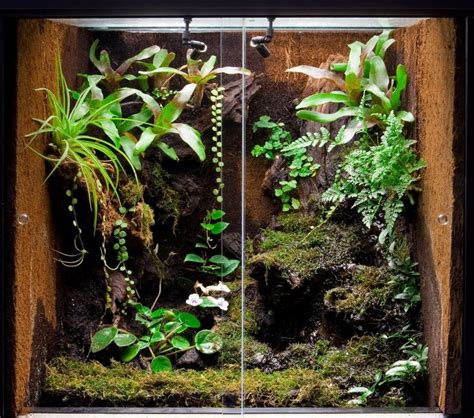Introduction
Bioactive terrariums are mesmerizing microcosms of nature, housing a complex interplay of living organisms and natural processes. Maintaining these thriving ecosystems requires a holistic approach that mimics the intricacies of the natural world. This comprehensive guide will delve into the essential aspects of bioactive terrarium maintenance, empowering you to create and sustain a balanced and verdant habitat for your exotic inhabitants.

Understanding Bioactive Terrariums
Bioactive terrariums are self-sustaining enclosures that replicate the natural ecological interactions between plants, animals, and microorganisms. By introducing a diverse array of species, including decomposers, herbivores, and predators, these ecosystems mimic the intricate food webs and nutrient cycling found in nature. This harmonious balance ensures the terrarium’s stability and long-term viability.
Benefits of Bioactive Terrariums
- Self-cleaning: Clean-up crews, such as isopods and springtails, consume organic waste, minimizing the need for manual cleaning.
- Nutrient cycling: Decomposers break down waste and dead organic matter, releasing essential nutrients for plant growth.
- Naturalistic environment: Bioactive terrariums provide a more natural habitat for animals, reducing stress and fostering their well-being.
Key Components of Bioactive Terrariums
1. Substrate
The substrate forms the foundation of your bioactive terrarium. It should provide drainage, moisture retention, and a suitable environment for plants and microorganisms. Common substrate options include:
- Coco fiber
- Peat moss
- Compost
- Leaf litter
2. Plant Life
Plants play a crucial role in bioactive terrariums, providing oxygen, humidity, and shelter. Choose species that are compatible with the animals you intend to house. Consider the following factors:
- Light requirements
- Water needs
- Growth rate
- Toxicity
3. Animal Life
Carefully select animal species based on their size, compatibility, and dietary needs. Ensure the terrarium provides adequate space, hiding places, and food sources. Common bioactive terrarium animals include:
- Frogs
- Toads
- Salamanders
- Lizards
- Snakes
- Invertebrates
4. Custodial Crew
Custodial crew members, such as isopods and springtails, play a vital role in waste management and nutrient cycling. These invertebrates consume organic matter and aerate the substrate.
5. Humidity and Temperature
Maintaining optimal humidity and temperature levels is essential for the well-being of animals and plants in a bioactive terrarium. Use hygrometers and thermometers to monitor these parameters regularly.
- Humidity: 60-80% for most species
- Temperature: Varies depending on species, but typically within 65-85°F
Best Practices for Maintenance
1. Regular Monitoring
- Inspect animals daily for health issues.
- Check substrate moisture and adjust as needed.
- Monitor plant growth and remove dead leaves or stems.
2. Spot Cleaning
- Remove uneaten food or large pieces of waste.
- Vacuum or scoop up excess substrate if necessary.
3. Occasional Deep Cleaning
- Every 3-6 months, remove all substrate and replace it with fresh material.
- Clean the terrarium walls and equipment.
- Check the roots of plants for any issues.
4. Feeding and Nutrition
- Provide a balanced diet for all animals.
- Supplement with live food, vegetables, or fruits as needed.
- Ensure proper hydration by providing clean water sources.
5. Lighting
- Most bioactive terrariums require a combination of UVA and UVB lighting.
- Use the appropriate wattage bulbs and set up on a timer for optimal light cycles.
Troubleshooting Common Issues
- Overgrowth: Trim excess plant growth to avoid overcrowding.
- Mold: Adjust humidity levels and increase ventilation.
- Pests: Introduce predatory invertebrates or adjust environmental conditions to discourage invaders.
- Improper water balance: Check drainage and adjust water frequency.
- Animal health issues: Isolate sick animals and consult a veterinarian promptly.
Additional Tips and Tricks
- Create vertical space: Use ledges, climbing structures, and live plants to provide animals with vertical territory.
- Introduce variety: Add different species of plants and animals to increase ecological diversity.
- Be patient: Establishing a stable bioactive terrarium may take time. Don’t get discouraged and make adjustments as needed.
Conclusion
Bioactive terrariums offer a captivating glimpse into the wonders of nature. By understanding the key components and implementing best maintenance practices, you can create thriving ecosystems that provide a natural and enriching environment for your exotic companions. Embrace the concept of responsible pet ownership and enjoy the ongoing adventure of creating and sustaining a bioactive terrarium.





















